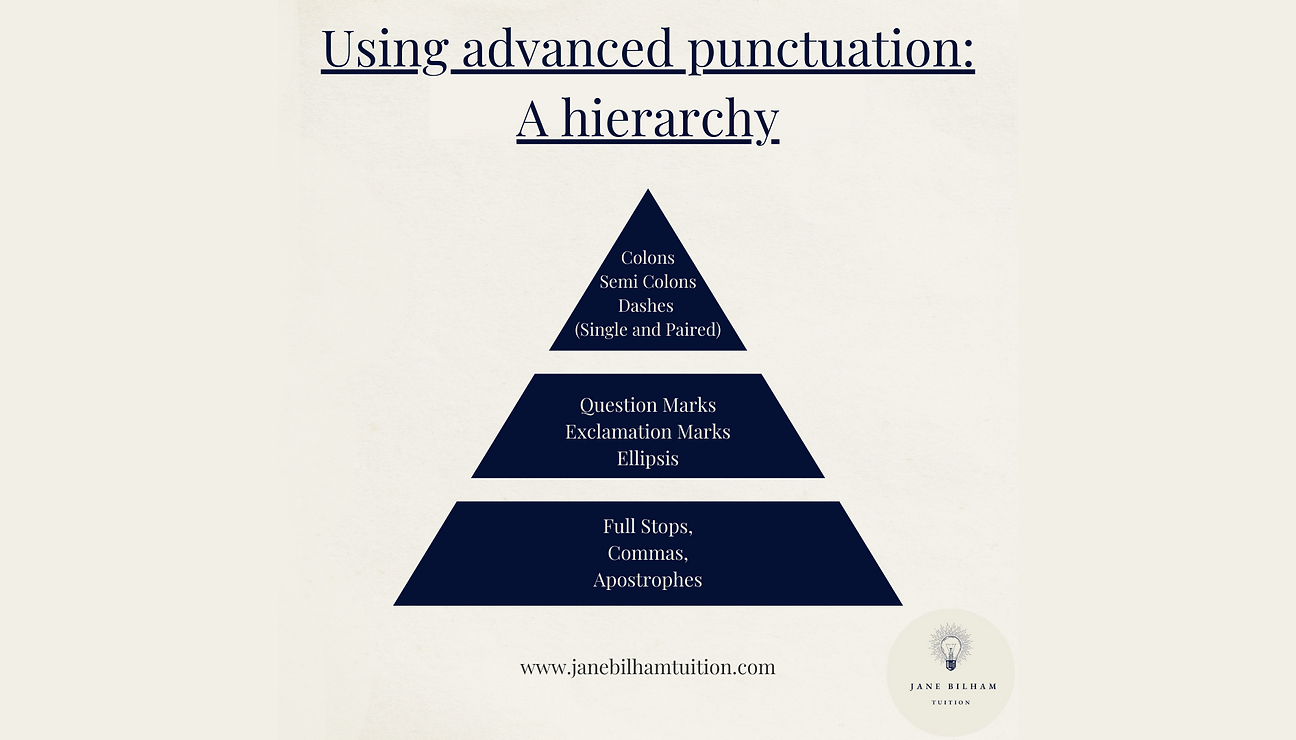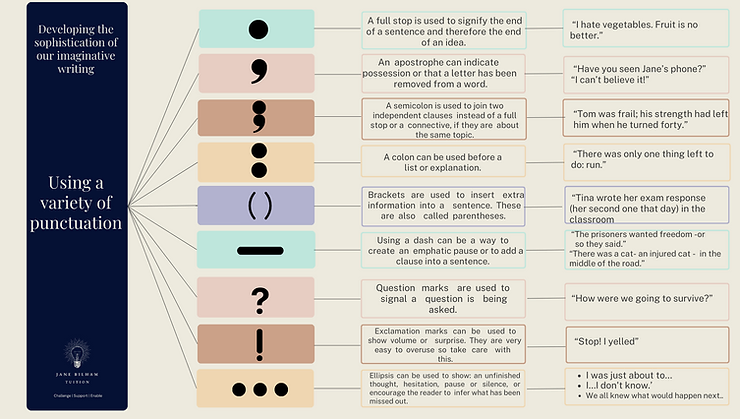Improving punctuation – a quick win to elevate GCSE Imaginative writing.
It may not be the most interesting lesson we’ll ever teach – I would certainly welcome any ideas on how to deliver an all singing, all dancing, lesson on punctuation – but as teachers of GCSE English Language, it’s important to help our students understand the power of punctuation in their writing. Punctuation is an essential tool for creating clear and effective writing, and it can be especially challenging for students who are still mastering the basics of grammar and syntax. But if we’re to reach the holy grail that is conscious crafting, a key skill for the higher bands in any GCSE English Language Section B response, it’s essential that we take time out of our packed schedule to revisit the basics and give our students time and space to practice.
Why revisit punctuation?
A well-placed comma or semicolon can add emphasis, change the pace of a sentence, or create a new meaning altogether. It can mean the difference between a grade in that crucial AO6 Assessment Objective for GCSE English Language. Many students will be familiar with the basics and whilst they may not always be used accurately, most students will remember to demarcate their sentence at some point. I’m fully aware that my intervention sessions afford me the luxury of time and space away from the pressure of course coverage – it’s often for that very reason that class teachers use me to revise basic skills such as sentence structures, clauses and punctuation.
An unofficial hierarchy

With students this week, we’ve discussed how to move beyond the basics and discussed an unofficial hierarchy of punctuation marks that links to the assessment criteria for GCSE English Language exams. We discussed how to use semi colons, colons and dashes for impact, focusing on how we can craft sentences to create emphasis and tension. We all agreed that obviously we needed to show the basic skills of full stops and commas, all used accurately and for effect. We all (after some persuasion) agreed that using exclamation marks and ellipsis should be treated with caution – so often the over enthusiastic use of these can actually diminish the quality of a response, particularly for Grade 4/5 candidates who may struggle to fully control their demarcation. It was when we began to discuss colons, semi colons and dashes that things got interesting. Many students had heard of these marks, some could elicit a vague definition and optimistically referred to lists. Not one student could clearly explain how we can use these punctuation marks accurately in the context of imaginative writing. So we went back to basics.
Practice makes perfect
Obviously, one of the most effective ways to teach GCSE English students how to use varied punctuation is to provide them with examples, such as this writing mat

Showing them how different types of punctuation can be used to create different effects and emphasis in a sentence is essential. This can be a real quick fix to elevate the sophistication of a borderline student’s writing and also to extend and encourage crafting for those aiming for the top grades. But, like anything, embedding a skill requires students to be afforded the luxury of time and space to practice before it becomes fully embedded into their repertoire.
As a consequence, we spent a good few lessons where starter tasks would include practice exercises. We alternated between shorter sentence level ‘rewrite this sentence with alternative punctuation’ style tasks and longer redrafting and editing tasks. Slowly but surely, we are making progress towards this becoming an embedded skill.
Now the obvious solution to all of this is that our students read a range of high quality texts – ideally independently – but that’s a blog for another day. What we can do with immediate effect is to encourage them to see the versatility of their learning: by using the extracts for Section A of the GCSE English Language exam as inspiration for their own writing and deploying the GCSE English Literature texts in the same way. By reading texts that use varied punctuation for deliberate effect, students should gain an insight into how different types of punctuation are used in context. Hopefully, this will help them to understand the effects of different types of punctuation and how they can be used in their own writing. I’m constantly amazed by how many students fail to see the links between the topics and skills on the specification – sometimes a timely reminder can make a huge difference.
A quick win?
Allocating some of our precious teaching time to revisit basics can often be frustrating and stressful but it can make an enormous difference to not only the writing of our students but also their confidence. By providing them with examples, practice exercises, feedback, guidance, and a variety of texts to read, we can help students to develop the skills they need to use punctuation effectively and reach the coveted status of using structures to create effect. With a huge dose of patience and persistence for everyone, this is potentially a quick win to dramatically improve the quality of their writing. Who knows, it may even make tackling the marking mountain a little more rewarding for us, too.
You can access various free and paid resources to further guide your revision here.
